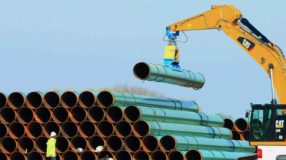The Interstate Natural Gas Association of America, in comments filed Thursday, sought to improve the Pipeline and Hazardous Materials Safety Administration’s proposed natural gas transmission safety proposal by offering specific language and suggestions to bolster pipeline safety while mitigating negative effects on the environment, local communities and natural gas consumers.
“Pipeline safety is the top priority of INGAA and its members,” said INGAA President and Chief Executive Officer Don Santa. “INGAA strongly supports regulations that embrace and advance improvements in pipeline safety practices, with the intent of achieving the goal of zero incidents. We agree with the intent of Congress in requiring these new regulations, and with PHMSA’s stated intent in the Notice of Proposed Rulemaking. However, we disagree in many cases with the specific means proposed by PHMSA to achieve these commonly shared pipeline safety goals.”
INGAA identifies three key provisions that PHMSA should remove or modify to ensure that its rulemaking truly enhances pipeline safety. To address these specific deficiencies, INGAA suggests the following:
- PHMSA allow the use of alternative methods for validating Maximum Allowable Operating Pressure in order to ensure the ongoing development and implementation of technologies and practices that improve pipeline safety.
- PHMSA should withdraw the proposal for spike hydrostatic pressure testing.
- PHMSA should remove overly prescriptive material verification criteria from the NPRM.
In its 219-page comments, INGAA notes that NPRM does not recognize the proposal’s implications for compliance with other applicable federal requirements, including those of the Environmental Protection Agency and the Federal Energy Regulatory Commission. The increased methane emissions associated with hydrostatic pressure testing and certain repairs run counter to the president’s goals of reducing methane emissions, as reflected by the new EPA rule restricting methane emissions from certain oil and gas facilities. Removing lines from service to perform hydrostatic testing would raise issues under FERC’s regulations and policies.
INGAA also commented that the cost-benefit analysis contained in PHMSA’s proposal falls far short of the Pipeline Safety Act’s requirements to perform a risk-based cost-benefit analysis. PHMSA significantly underestimates the costs of certain proposed rules and significantly overestimates the NPRM’s benefits. In addition, the NPRM’s Draft Environmental Assessment falls well short of meeting NEPA requirements and CEQ guidance.
Finally, NGAA also notes that the NPRM fails to recognize the cumulative impact of the individual proposed regulations. Provisions that would appear to be limited to specific situations and types of pipelines in fact apply far more broadly due to numerous cross references in the proposed regulatory text. As a result, some of the proposal’s most burdensome provisions apply to almost all transmission pipelines.
“INGAA is committed to pipeline safety and accepts the challenge of continuously improving pipeline integrity and safe operations,” INGAA’s comments read. “INGAA requests that PHMSA promote this effort by promulgating regulations that enable, rather than frustrate, operators’ ability to implement the most effective technologies and approaches for promoting the safe and reliable operation of the nation’s gas pipeline infrastructure.”
INGAA’s full comments and supporting documents are available here: http://www.ingaa.org/Filings/2016pipelinesafetycomments.aspx







